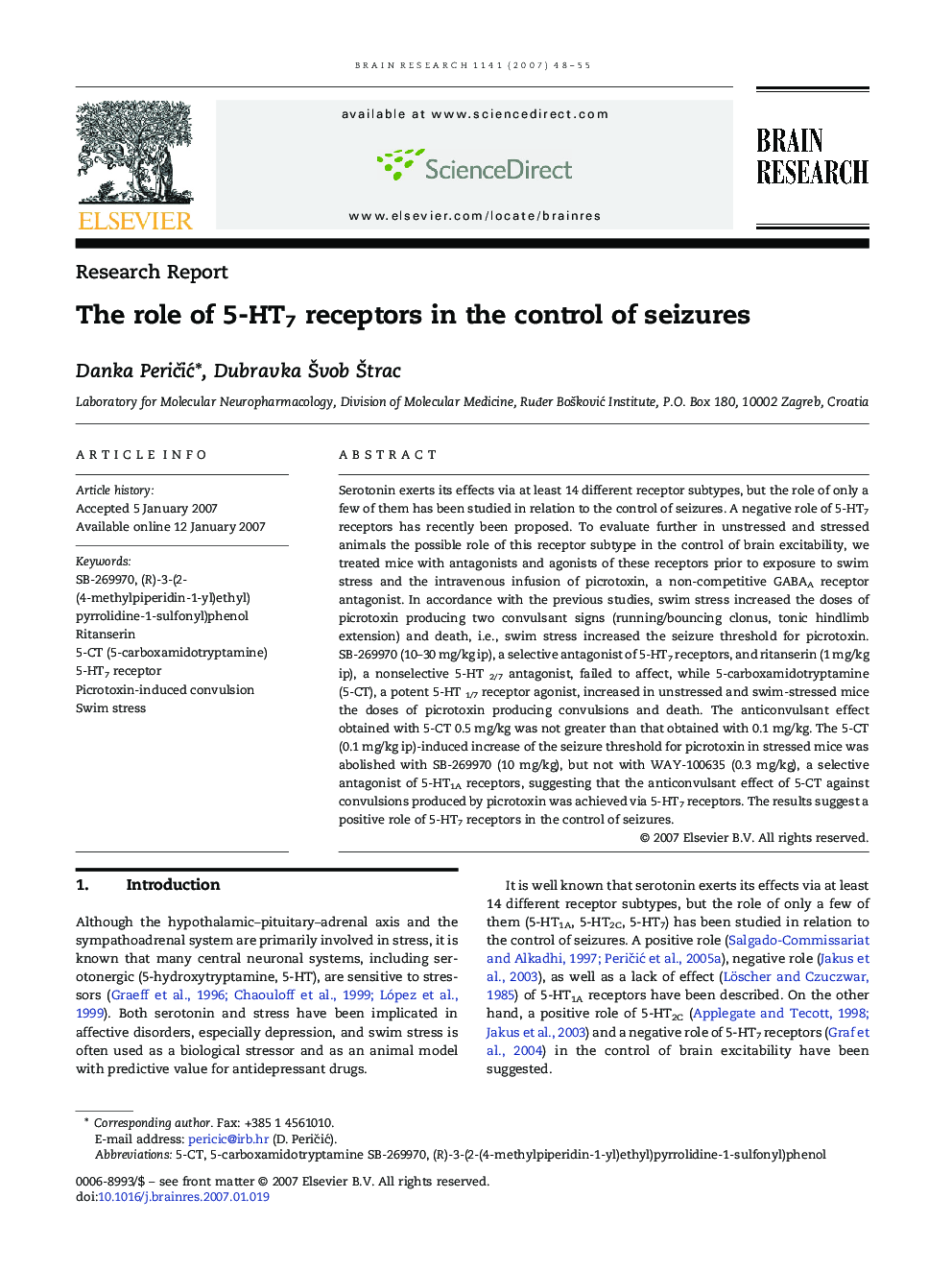| کد مقاله | کد نشریه | سال انتشار | مقاله انگلیسی | نسخه تمام متن |
|---|---|---|---|---|
| 4331388 | 1614298 | 2007 | 8 صفحه PDF | دانلود رایگان |

Serotonin exerts its effects via at least 14 different receptor subtypes, but the role of only a few of them has been studied in relation to the control of seizures. A negative role of 5-HT7 receptors has recently been proposed. To evaluate further in unstressed and stressed animals the possible role of this receptor subtype in the control of brain excitability, we treated mice with antagonists and agonists of these receptors prior to exposure to swim stress and the intravenous infusion of picrotoxin, a non-competitive GABAA receptor antagonist. In accordance with the previous studies, swim stress increased the doses of picrotoxin producing two convulsant signs (running/bouncing clonus, tonic hindlimb extension) and death, i.e., swim stress increased the seizure threshold for picrotoxin. SB-269970 (10–30 mg/kg ip), a selective antagonist of 5-HT7 receptors, and ritanserin (1 mg/kg ip), a nonselective 5-HT 2/7 antagonist, failed to affect, while 5-carboxamidotryptamine (5-CT), a potent 5-HT 1/7 receptor agonist, increased in unstressed and swim-stressed mice the doses of picrotoxin producing convulsions and death. The anticonvulsant effect obtained with 5-CT 0.5 mg/kg was not greater than that obtained with 0.1 mg/kg. The 5-CT (0.1 mg/kg ip)-induced increase of the seizure threshold for picrotoxin in stressed mice was abolished with SB-269970 (10 mg/kg), but not with WAY-100635 (0.3 mg/kg), a selective antagonist of 5-HT1A receptors, suggesting that the anticonvulsant effect of 5-CT against convulsions produced by picrotoxin was achieved via 5-HT7 receptors. The results suggest a positive role of 5-HT7 receptors in the control of seizures.
Journal: Brain Research - Volume 1141, 13 April 2007, Pages 48–55